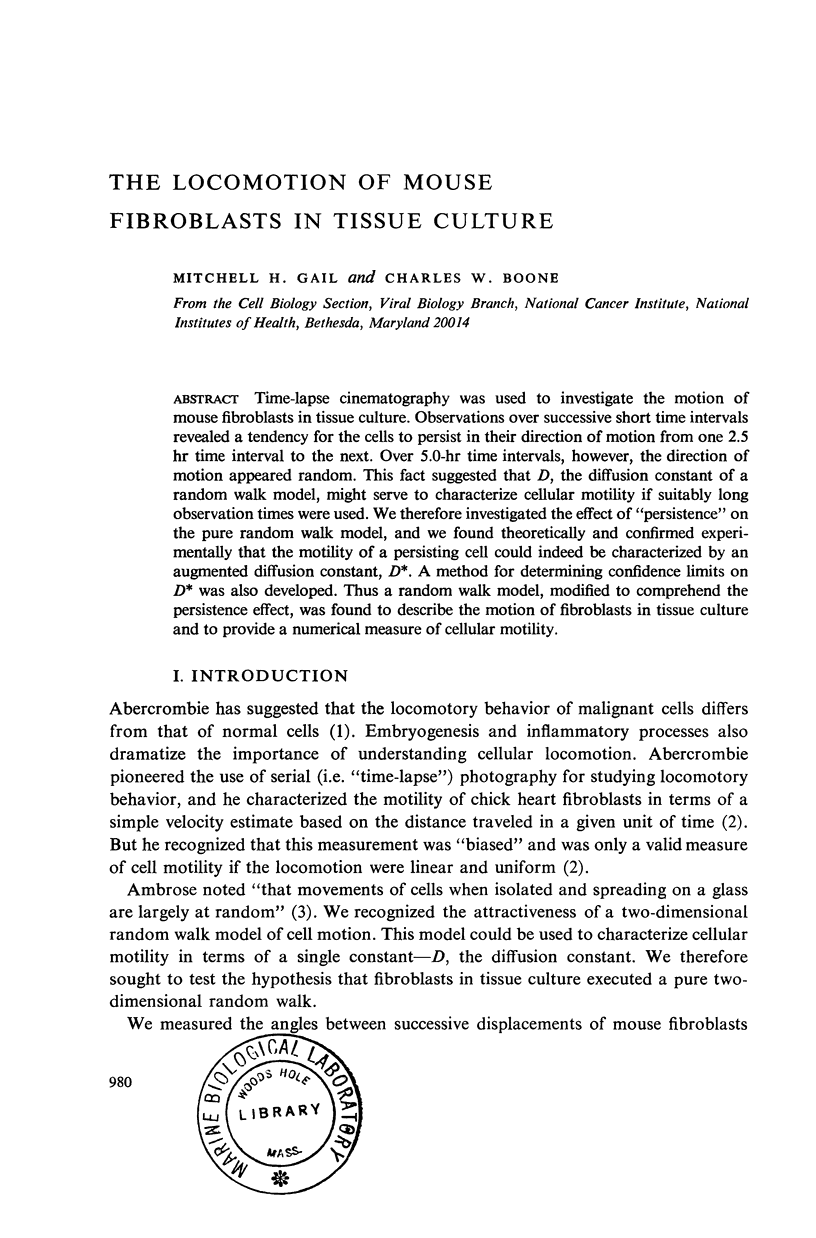The Locomotion of Mouse Fibroblasts in Tissue Culture (original) (raw)
Abstract
Time-lapse cinematography was used to investigate the motion of mouse fibroblasts in tissue culture. Observations over successive short time intervals revealed a tendency for the cells to persist in their direction of motion from one 2.5 hr time interval to the next. Over 5.0-hr time intervals, however, the direction of motion appeared random. This fact suggested that D, the diffusion constant of a random walk model, might serve to characterize cellular motility if suitably long observation times were used. We therefore investigated the effect of “persistence” on the pure random walk model, and we found theoretically and confirmed experimentally that the motility of a persisting cell could indeed be characterized by an augmented diffusion constant, D*. A method for determining confidence limits on D* was also developed. Thus a random walk model, modified to comprehend the persistence effect, was found to describe the motion of fibroblasts in tissue culture and to provide a numerical measure of cellular motility.

Selected References
These references are in PubMed. This may not be the complete list of references from this article.
- ABERCROMBIE M., HEAYSMAN J. E., KARTHAUSER H. M. Social behaviour of cells in tissue culture. III. Mutual influence of sarcoma cells and fibroblasts. Exp Cell Res. 1957 Oct;13(2):276–291. doi: 10.1016/0014-4827(57)90007-1. [DOI] [PubMed] [Google Scholar]
- ABERCROMBIE M., HEAYSMAN J. E. Observations on the social behaviour of cells in tissue culture. I. Speed of movement of chick heart fibroblasts in relation to their mutual contacts. Exp Cell Res. 1953 Sep;5(1):111–131. doi: 10.1016/0014-4827(53)90098-6. [DOI] [PubMed] [Google Scholar]
- Aaronson S. A., Todaro G. J. Development of 3T3-like lines from Balb-c mouse embryo cultures: transformation susceptibility to SV40. J Cell Physiol. 1968 Oct;72(2):141–148. doi: 10.1002/jcp.1040720208. [DOI] [PubMed] [Google Scholar]